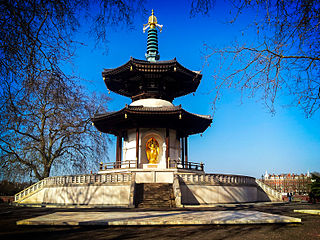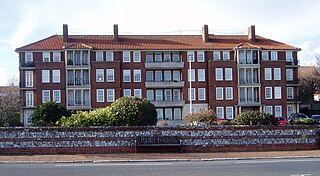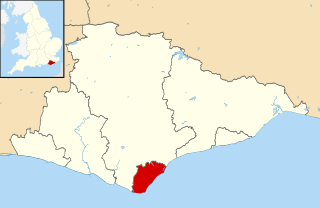Other plaques
In addition to the plaques which form part of the above scheme, the following plaques and memorials have been erected by other bodies or individuals.
| Name | Dates | Profession/Dedication | Plaque and location | Sponsoring body |
|---|---|---|---|---|
| Nelson Victor Carter | 1887–1916 | Company Sergeant Major - holder of the Victoria Cross | Blue plaque at 33 Greys Road | Royal Sussex Regimental Association |
| Charlie Chester | 1914–1997 | Comedian, poet and artist | Wooden plaque inside Royal Hippodrome | Friends of the Royal Hippodrome with support of Eastbourne Civic Society |
| Tommy Cooper | 1921–1984 | Comedian and magician | Iron silhouette at 7 Motcombe Lane | Family member |
| Charles Dickens | 1812–1870 | Writer | Blue plaque at Pilgrims, 4–6 Borough Lane | Eastbourne Dickensians |
| Professor Thomas Huxley | 1825–1895 | Biologist | Small white plaque at Hodeslea, 10 Staveley Road | Unknown (probably a previous owner of the house) |
| St Mary's: one-time barracks, workhouse and hospital | 1794–1990 | Dedicated to former soldiers, inmates, patients and staff | Blue plaque at Letheren Place | Former staff of St Mary's Hospital |
| Professor Frederick Soddy | 1877–1956 | Physicist and radiochemist | Blue plaque at Eastbourne College, Blackwater Road | Institute of Physics |
| Small bronze plaque at 6 Bolton Road | Unknown (probably a previous owner of the house) |
Nelson Victor Carter, born in Eastbourne in 1887, was posthumously awarded the Victoria Cross while serving with the Royal Sussex Regiment on the Western Front in 1916. His medal is on display at the Eastbourne Redoubt. An appeal launched by the local branch of the Royal Sussex Regimental Association resulted in the erection of a plaque at the house in Greys Road where he and his wife had lived. [6] [7] The radio star Charlie Chester was born Cecil Victor Manser, the son of a local cinema sign-painter who is listed in the 1914 Eastbourne Blue Book at 5 Tideswell Road. An iron silhouette of Tommy Cooper, complete with the comedian’s characteristic fez and wand, can be seen at what was his weekend cottage in Motcombe Lane.

The benefactor of the plaque to Charles Dickens was the Chairperson of the Eastbourne Dickensians, the late Vera Banwell-Clode: it records the author’s visits during the 1830s, when he stayed as a guest of the Victorian artist Augustus Egg, RA, who rented the house in Borough Lane. [8] [9] The biologist Professor Thomas Huxley took up residence in Staveley Road in 1890. [10] Frederick Soddy, the eminent radio chemist and Nobel prizewinner, was born at 6 Bolton Road and educated at Eastbourne College. His larger plaque can be seen on School House in Blackwater Road. [11] A blue plaque commissioned by the staff of the former St Mary’s Hospital, 1794–1990, was erected in Letheran Place in 2003. It commemorates the soldiers, inmates, patients and staff who lived and worked on the site. [12]
A bronze plaque bearing the inscription “In 1867 this building was the first home of Eastbourne College” can be seen at Spencer Court (formerly Ellesmere Villas), 1 Spencer Road. It was erected by the Arnold Embellishers—a charitable society associated with Eastbourne College—to mark the 140th anniversary of the founding of the school. [13]
Following the loss of the RMS Titanic, an appeal was launched in 1912 for a plaque in honour of James Wesley Woodward, a former cellist with the Eastbourne Municipal Orchestra, who lost his life when the liner sank on her maiden voyage. In 1913, after much disagreement over a location, the marble and bronze plaque was finally placed on Grand Parade opposite the Eastbourne Bandstand. It can still be seen at the lower level, opposite the rostrum of the present bandstand. [1] A royal visit by George V and Queen Mary in March 1935 is commemorated by a plaque on chalet number 2 at Holywell. [14]














